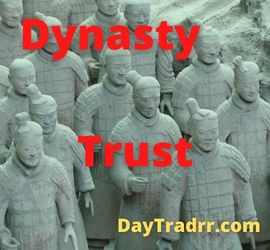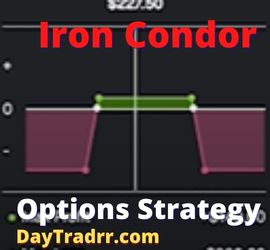What is a Dead Cat Bounce when Investing?
 A dead cat bounce is an investment phrase. It refers to a brief increase in the price of a stock or other asset amid a lengthy period of decline. The name derives from the concept that even a dead cat will bounce if it falls far and fast enough. Another similar term is a “sucker’s rally“. The brief recovery can persuade investors to invest in a struggling firm. Technically, a bounce can only be detected after it has occurred. This is because the bounce is only a short-term price gain that is followed by a continued decrease. The second drop lowers the share price to new lows. Unfortunately, there is no way to determine if a share price gain is a dead cat bounce or the start of a sustained recovery. This can only be determined if and when the stock’s value stabilizes, or the second downturn happens.
A dead cat bounce is an investment phrase. It refers to a brief increase in the price of a stock or other asset amid a lengthy period of decline. The name derives from the concept that even a dead cat will bounce if it falls far and fast enough. Another similar term is a “sucker’s rally“. The brief recovery can persuade investors to invest in a struggling firm. Technically, a bounce can only be detected after it has occurred. This is because the bounce is only a short-term price gain that is followed by a continued decrease. The second drop lowers the share price to new lows. Unfortunately, there is no way to determine if a share price gain is a dead cat bounce or the start of a sustained recovery. This can only be determined if and when the stock’s value stabilizes, or the second downturn happens.
The purpose of attempting to identify a dead cat bounce is to evaluate if the recovery is temporary or a reversal. Will the stock or other asset’s gains continue to rise in price following a protracted downturn? If a trader has sold a stock short and sees a price gain as a dead cat bounce, he or she may elect to keep the short position. In contrast, if a trader sees a market fluctuation as a long-term rally, the trader should close the short position.
Dead Cat Bounce – A Closer Look
A dead cat bounce is a term used in technical stock analysis. Many analysts believe a company’s fundamentals, rather than reading stock charts, is a superior method. Particularly when looking to achieve market-beating returns over time. However, it is still useful to understand some of the basic ideas used by technical analysts. It is worthwhile to consider if a stock’s low price is rebounding because the company’s business is strengthening. Or, is the stock simply garnering attention because it seems cheap after a long drop.
A dead cat bounce is a continuation pricing pattern. Initially, the rebound appears to be a reversal of the dominant trend. However, it is swiftly followed by a continuation of the downward price movement. After the price falls below its previous low, it emerges as a dead cat bounce rather than a reversal. Downtrends are sometimes interrupted by brief periods of recovery or modest rallies in which prices momentarily rise. This might be due to traders or investors closing out short positions. Or, they could be buying on the mistaken idea that the security has struck a bottom.
The bounce pattern is a pricing trend that is generally identified only in retrospect. Analysts use technical and fundamental analysis methods to anticipate the potential duration of the recovery. Will the rebound have legs, or fall short? A dead cat bounce can occur in the larger economy, such as during a recession. Or, it can occur in the price of a single company or group of stocks. Short-term traders may try to profit from the minor rise. Other traders and investors may see the transitory reversal as an opportunity to enter a short position.
Hindsight
Detecting a dead cat bounce ahead of time is tough, even for experienced investors. It is like trying to successfully identify a market peak or trough. In March 2009, for example, New York University economist Nouriel Roubini referred to the nascent stock market rebound as a “dead cat bounce,” predicting that the market would quickly reverse direction and collapse to new lows. Instead, March 2009 marked the start of a long bull market that finally surpassed the pre-recession peak.
“It is déjà vu all over again. We have already seen this Groundhog Day movie at least six times over and over again in the last year or so: the market starts to rally – this time around about 8% in a week – and the chorus of optimists starts to say that this is the bottom of the economic and financial crisis and that we are at the beginning of a sustained stock market rally that signals the true end of this bear market. So, in conclusion, and caveat emptor for investors: Dear investors, do enjoy this dead cat bounce and bear market sucker’s rally … don’t wait too long until you jump ship while the financial Titanic hits the next financial iceberg: you may get squeezed and crashed in the rush to the lifeboats.” (Source: New York University economist Nouriel Roubini)
How to Spot A Dead Cat Bounce
A dead cat bounce provides only an illusion of genuine inherent value. As a result, investors may be tempted to take advantage of an apparent opportunity before it actually materializes. The normal sequence of events outlined below may assist an investor in accurately identifying a false bounce.
- Steady decline – A security’s price steadily declines.
- Brief recovery – The price sees a monetary gain for a short time.
- Continuation of the downward trend – A security’s price begins to regress again, dropping lower than the previous low price.
Unfortunately, these circumstances make it all too easy to misinterpret a temporary bounce as an investing opportunity. In fact, there is no precise method to distinguish a temporary bounce from a full market rebound. As a result, it’s usually only possible to spot this pattern after the fact. In other words, it is difficult to impossible to accurately identify the pattern when it’s happening in real-time.
The possibilities:
- Rally vs Dead Cat Bounce – Consider whether the now-rising stock still has poor fundamentals. Has anything changed from when its price was falling? If there is no market indication to explain why the stock is rebounding, it may be reasonable to assume the correction is a temporary bounce.
- Lowest price vs Dead Cat Bounce – Investors are always looking for opportunities to profit. They actively seek investment opportunities that allow them to buy low and sell high. Typically, they profit from their investing initiatives by employing such tactics. As a result, while evaluating investment possibilities, a successful investor must quickly identify developing firms. Then, purchase shares of its stock before other investors become aware of the potentially lucrative company. Corporations go through business cycles in which stock values change. As a result, determining the lowest price point is difficult. There is no way to tell if a dead cat bounce is taking place until after the fact.
- Bear market bottom vs Dead Cat Bounce – Investors may potentially misinterpret a dead cat bounce as the end of a bear market. It’s not uncommon for equities to make a major comeback when a bear market bottoms out. Only time will tell if an upswing is sustainable, or just another bounce on the way to the actual bottom.
Example of a Dead Cat Bounce
To demonstrate, imagine stock LMN trades at $90 per share on May 15th, then falls to $60 per share during the next three months. Between September 10th and September 17th, the price climbs to $75 per share before dramatically declining on September 29th. Finally, the stock price of LNM settles at $45 per share. This is how a dead cat bounce might seem in a real-world trading situation. The security halted its descent to register a quick rebound in September. But, the price recovery was brief before it began sliding again, finally stabilizing at a significantly lower price.
Identifying a Dead Cat Bounce – Limitations
The difficulty in identifying a dead cat bounce is that it cannot be done properly until it has actually occurred. For example, the S&P 500 fell severely in March 2020 due to the pandemic and then began to recover. However, many experts originally dismissed the rise as a dead cat bounce. However, the S&P 500’s value continued climbing considerably. In retrospect, those analysts were incorrect. If the technical stock analysts were consistently right, it would be simple to become wealthy by investing in the stock market. Unfortunately, attempting to time the market by correctly pinpointing a stock’s low point or the commencement of a price rise is strictly a guessing game. It is akin to attempting to time the market. Investors are better off creating wealth in a sustainable manner. As a result, they may be better served by purchasing and holding the stocks of high-quality firms.
Up Next: What is a Dynasty Trust?
 A dynasty trust is a long-term trust established to convey wealth from generation to generation. It does this while avoiding transfer taxes such as the gift tax, estate tax, or generation-skipping transfer tax (GSTT) during the duration of the trust’s assets. The longevity of the dynasty trust is its distinguishing feature. If correctly constructed, it has the potential to survive for many generations, if not forever. A properly designed dynasty trust can theoretically continue in perpetuity.
A dynasty trust is a long-term trust established to convey wealth from generation to generation. It does this while avoiding transfer taxes such as the gift tax, estate tax, or generation-skipping transfer tax (GSTT) during the duration of the trust’s assets. The longevity of the dynasty trust is its distinguishing feature. If correctly constructed, it has the potential to survive for many generations, if not forever. A properly designed dynasty trust can theoretically continue in perpetuity.
Historically, trusts could only be established for a certain number of years. Many states have a law against perpetuities. These statutes specify when a trust has to terminate. For example, a trust might exist for 21 years after the death of the last beneficiary who was alive at the time the trust was founded. As a result, a trust may possibly endure for 100 years or so under these conditions. Nevertheless, some states have lifted these restrictions on perpetuities. This allows for individuals and families with the financial means to establish dynasty trusts that can last for many generations.




